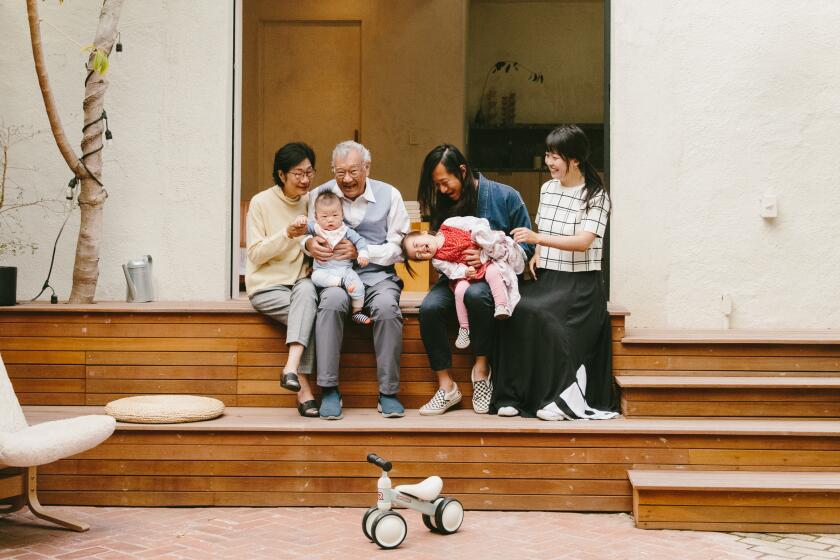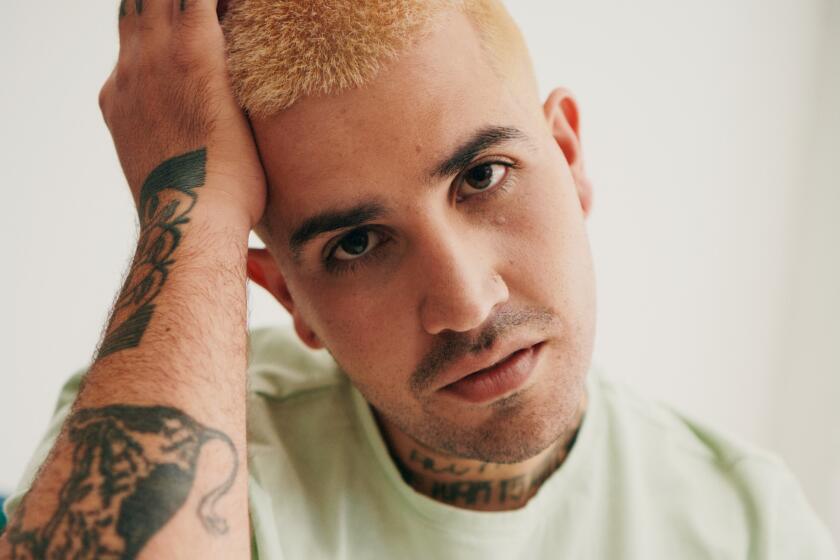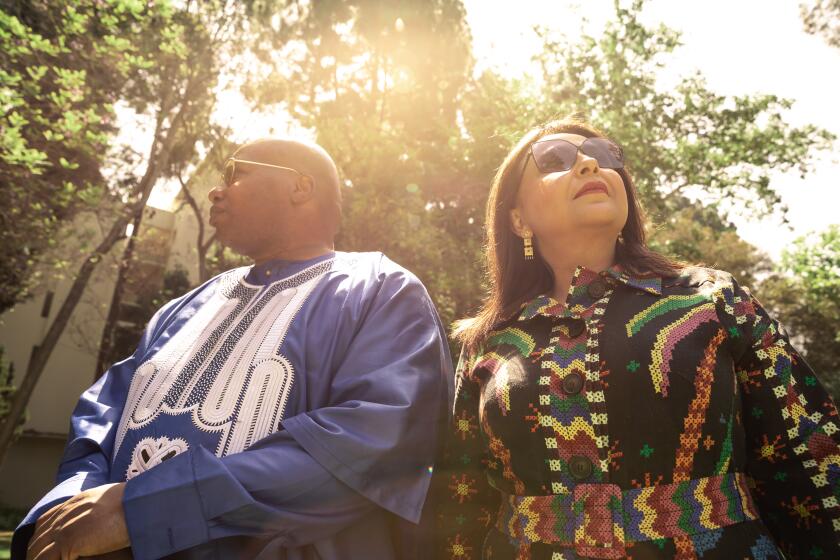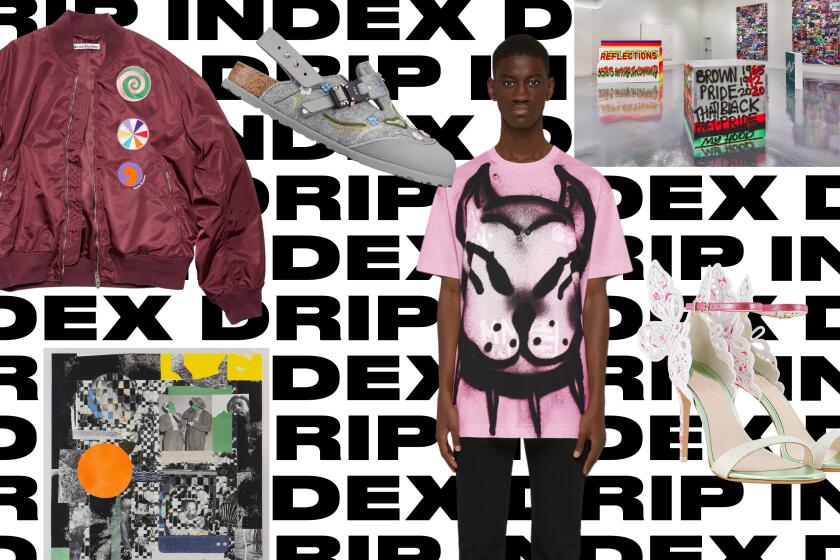- Share via
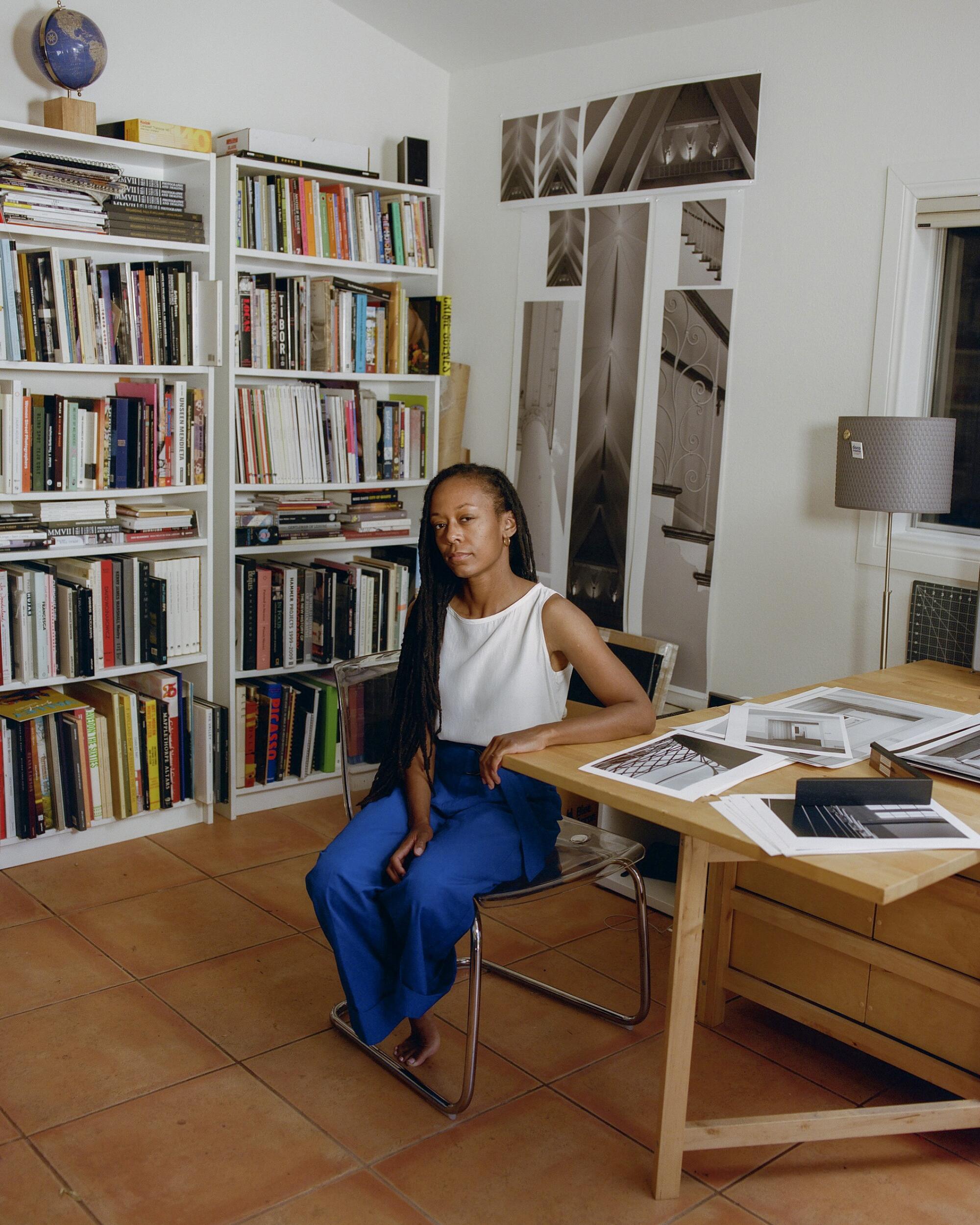
This story, as told to Elisa Wouk Almino, is part of Image issue 11, “Renovation,” where we explore the architecture of everyday life — and what it would look like to tear it all down. Read the whole issue here.
It started, for me, as a fascination with the equipment. It was just sort of everywhere all the time. I think the first time my dad taught me how to use a camera, I was about 5. I played around with his lights and took pictures around the house. But then I got serious about it when I was about 13 and had him show me how to do everything again and went from there.
I can’t think of a specific photograph that was a turning point for me, but there was an experience. I was a writing major at an arts high school, and in Pennsylvania, there used to be something called the Pennsylvania Governor’s School for the Arts. I thought that I would apply in writing, but then I decided, you know, “I write all year in school, why don’t I try something else?” and applied to photography. Doing that five-week program was when I figured out that I wanted to really devote my life to photography. I think what really drew me into it — beyond the exciting thing of being able to make an image and then see it later — was working in the darkroom, which can be a sort of magical experience for people. It was for me.
Photography, for me, is a way of seeing the world and being comfortable in the world and making myself part of the world. Home is probably the most consistent theme in my work. I moved a lot throughout my 20s — every place was kind of temporary. I didn’t feel like I had a home for a long time, so it was something that I was always looking for, and maybe that’s why I became so interested in the way other people live. I am interested in people. Even when I’m photographing architecture, what I’m interested in is the human story.
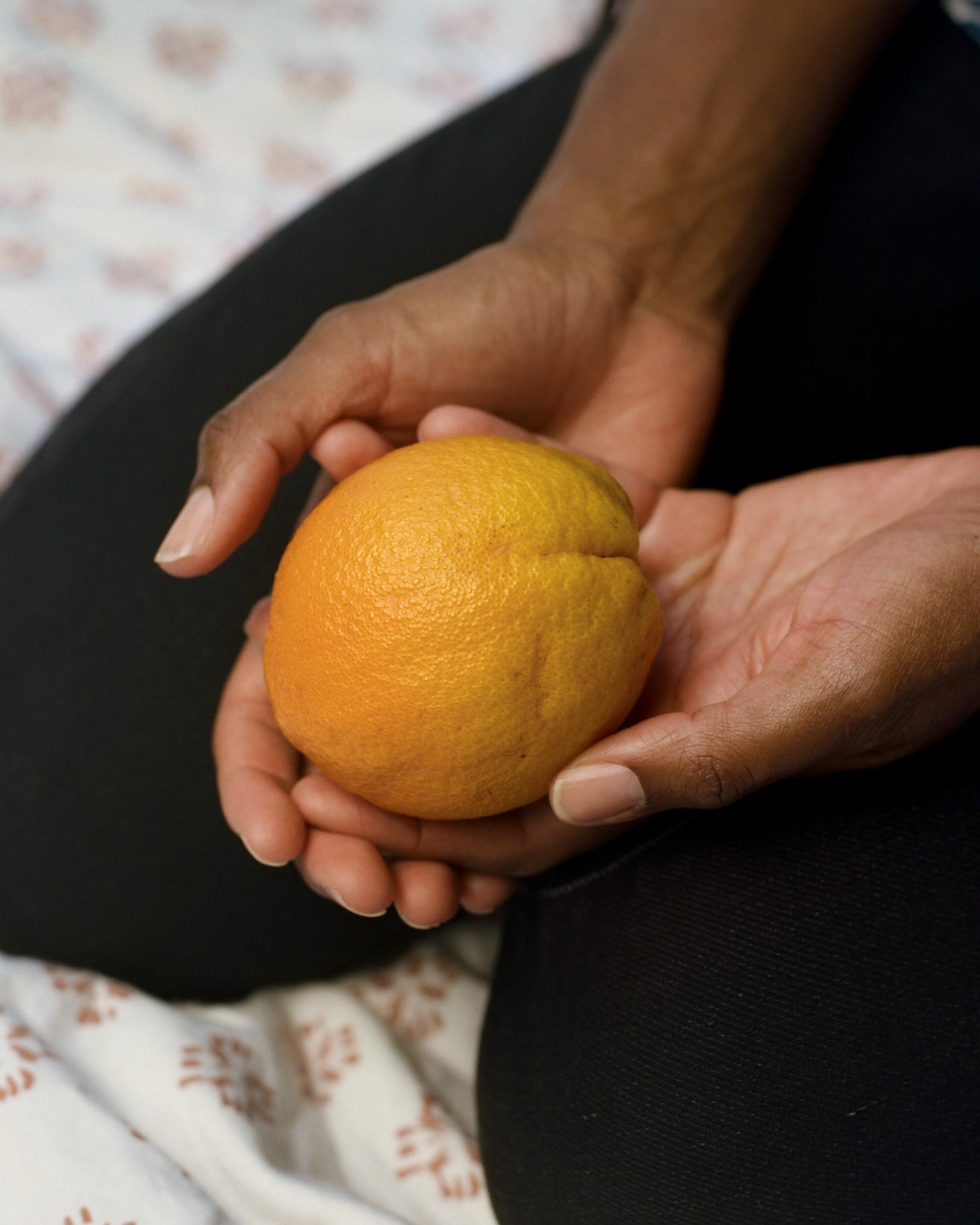
In summer of 2016, the architect Barbara Bestor emailed me and told me that there wasn’t really an artistic body of work about Paul Revere Williams’ career. When people talk about Paul Revere Williams, they talk about the fact that he was the first Black member of the American Institute of Architects, the first Black AIA fellow and the first Black recipient of the AIA Gold Medal, which is all really important but it’s kind of a reductive way to describe him and his work. Getting past this idea of him — being the first Black architect to do all of these different things — he was a brilliant architect and a brilliant businessperson who managed to really succeed in his work at a time when that was far from guaranteed. He was just a unique individual and someone who continues to be interesting to me as a human being.
I began photographing mostly his residential buildings, but also his public buildings, for an exhibition that was held at Woodbury University. That show happened in late 2017. But then I just kind of kept doing the work. Art Papers magazine sent me out to Las Vegas to photograph some of his work there. Meanwhile, I wrote an essay about the project, which led to a book being published. The work that I did in Nevada was seen by Carmen Beals, who is now a curator at the Nevada Museum of Art, and her seeing that work led to the Nevada Museum giving me a fellowship to photograph more of his work there. I finished that up earlier this year, and I’m now preparing for an exhibition of that work. It opens in July, and in December, it will travel to Nevada State Museum in Las Vegas.
The Williams work got me traveling around Los Angeles in a way that I wouldn’t have otherwise, and through the work, I became really interested in the history of Los Angeles — in how it became what it is, and the way it actually feels to live here.
More stories from Renovation
Author Xuan Juliana Wang reconsiders the meaning of an ADU.
Activist Theo Henderson and scholar Ananya Roy show you what listening to the unhoused looks like.
Critic Dave Schilling investigates the meaning of ‘chic’ carpets.
Artist Ryan Preciado can show you a new path for furniture design.
Poet Christopher Soto envisions an L.A. without carceral architecture.
When I was growing up, my grandmother lived in L.A. Growing up in the ’90s, it feels like L.A. was so prominent in culture — whether that was for exciting, interesting cultural things or for things like the uprising after the Rodney King verdict or the O.J. Simpson trial. L.A. was always a part of my consciousness. Once I got here, I just continued to fall in love with it, both for the city itself — the way it set up the architecture, the landscape — and for the sense of community that I felt as an artist. Even though I lived in New York for a total of nine years, I found the art community really closed off. But it didn’t feel that way here.
My husband has quite a bit of family here; his mom grew up here, and his grandfather lived in this great big house out in Encino. When my husband and I moved to L.A., we began visiting his grandfather regularly to watch Lakers games and have brunch. I became really interested in the house as a subject. The idea, at first, was photographing myself in the house, and then it was photographing myself as someone who could be living in that house. For me, it was this kind of palace that felt completely disconnected from, say, the house I grew up in in West Philly. In those photographs, I’m pretending to be a person who has this status or power that I don’t have, or that I didn’t have at the time. The work became my MFA thesis project at UCLA, “The Spotless Mirror” (2011-13). After my children were born, I started photographing them there. I was thinking about them as people who were born into the family whose house it was, and who had a really different connection to the place. That project, “Milk and Honey” (2018–ongoing), is about a fantasy version of my family.
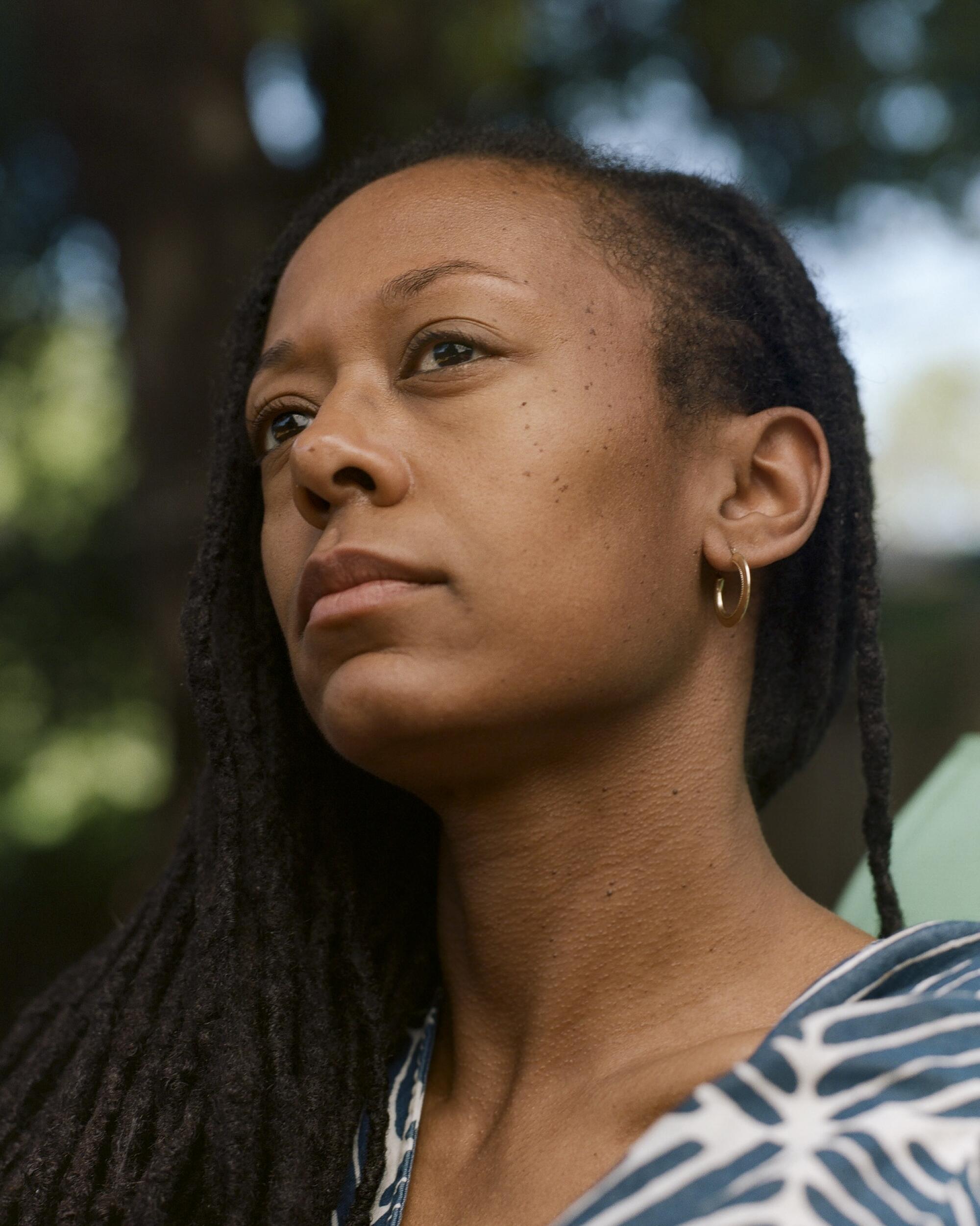
Adrian is 6, and David is 4. They are both incredibly energetic, incredibly curious. They’re both so smart and funny. But they’re also really different from each other. Adrian is interested in stories, whether that is on television, whether that’s movies, whether that’s books — his whole thing is listening to and making up stories. David, he’s more like, I could set up a tent for him in the backyard and he would just live out here. He would never ever get bored. He would never need to come into the house. He would just be happy looking for rocks and bugs all day.
The “Family Album” show organized by the Los Angeles County Museum of Art includes four projects of mine, including “Tender Boughs,” which is work that I did at home, beginning during the most isolated part of the pandemic, and that I’m still working on right now. The work is mostly portraits of my children but it also includes isolated gestures. It includes things like toys or little corners of our home. A solo show of “Tender Boughs” is also opening on June 4 at council_st in Historic Filipinotown.
For a long time, I felt that if I was taking pictures at home with my family versus these highly staged and carefully lit and really kind of fantasy versions of family photos, that I might not be taken seriously. I was worried that if I tried to do it, it wouldn’t be interesting to other people. I wanted to focus on my children as they actually are. I wanted to look at their relationship with each other. I’m an only child, and sibling relationships were just endlessly fascinating to me. It became a way to look at the way they played together, the way they love each other and the way that they are kind of growing and changing every day.
I think that having children made me feel a sense of urgency in terms of my own work. It became really important to me to have this other thing. For me to be able to devote all of the mental and physical energy necessary to my children, I also had to be able to always be doing this thing. “Tender Boughs” was work that I made when I was having a really hard time. You know, we were all stuck at home, and I had all of these things that I wanted to be doing that I couldn’t do, or that I had to do in a way that was modified because I had to be at home. And because I had to be looking after the children all the time, the work became this really important distraction for me.
There comes a time in every ADU story when you think you’ve made a terrible mistake.
In one of my favorite early photos from the body of work, I am standing on the second floor of the house that we lived in at the time and photographing my children playing in the backyard through the window. There is a way that they can change when my camera comes out, either becoming sillier or becoming more serious. And this photograph was really special to me, because they didn’t know I was there. Another one of my favorite images is my older son giving my younger son a hug. You can’t see their faces completely but you can see that my older son has his brow furrowed. I don’t remember what was going on with him at the moment but he was just feeling everything so deeply, and for whatever reason, it became so important to give his brother this hug.
Then there’s sort of a side project that involves my relationship with them. In the “Family Album” show, for example, there’s a piece called “Mothering,” which is all photographs in that body of work that I appear in, in one way or another, but I did really want the focus to be on the children.
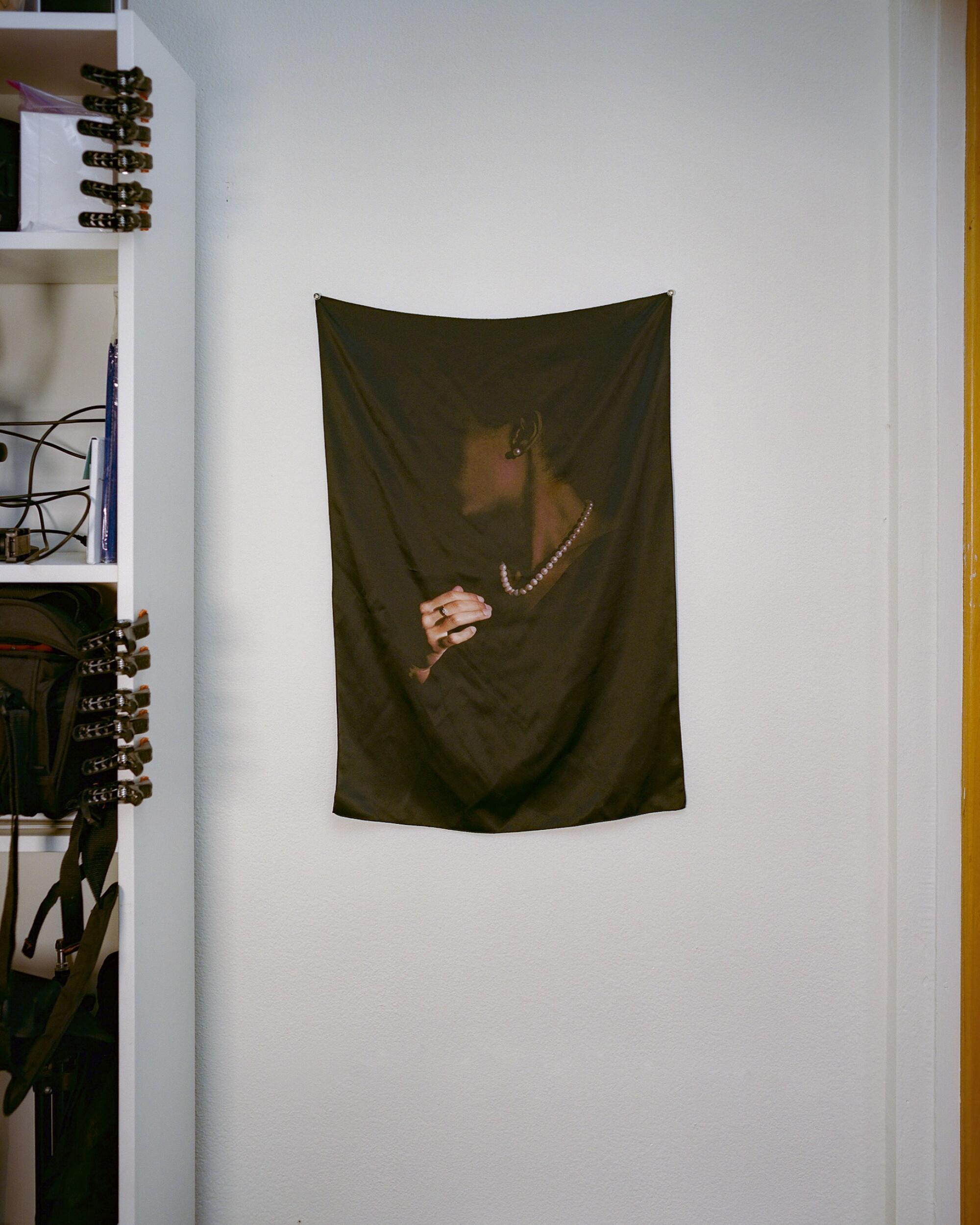
When I was taking photographs in college, pretty early on, I had the sense that I wanted to photograph myself. I was looking at work by Black artists who use themselves in their work, such as Carrie Mae Weems and Renee Cox, and really moved by the way that they use themselves in their work. And I felt that I wanted to be able to do that too. But I was very shy. I worried that people would think that if I photographed myself that it was somehow about vanity, when it was about wanting to feel seen, which isn’t the same. So, in the earliest photographs of myself, I’m often very small or cut off in some way. I’m technically visible but not able to really be seen. And it became something that I had to really work on. Being a character or being a different version of myself allowed me to photograph myself in a new way. It gave me some distance from looking at them as photographs of myself.
So I would say that the photographs that I appear in for “Tender Boughs” are of me — they’re me interacting with my children in a genuine way, even though that’s, of course, kind of mediated by the camera. But it’s me in my actual clothes, in my actual home, experiencing real moments with my family. Maybe that’s being in my 30s doing this work. I’m just more comfortable as a person now.
My family and I just moved into this house with the hope that it will be our home for a long, long time. There was never a place I could have all my things together, where I had a studio space. I have a studio space here now, which is amazing. Everything felt very temporary, and now I’m beginning to feel really settled, and that’s exciting. L.A. feels like home to me.
More stories from Image
